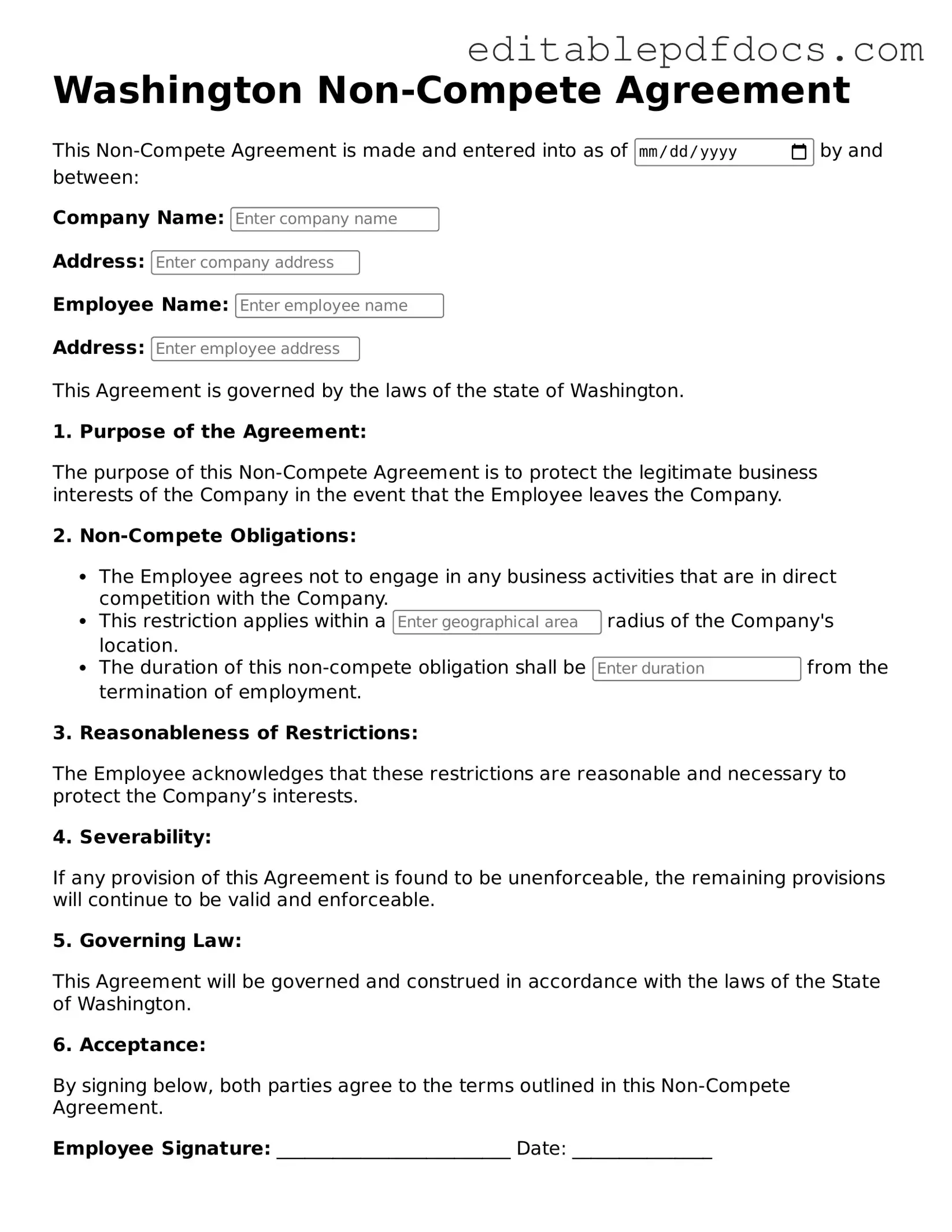Filling out the Washington Non-compete Agreement form can be straightforward, but several common mistakes can lead to complications. One frequent error is failing to include all necessary parties. The agreement must clearly identify both the employer and the employee. Omitting one party can render the agreement unenforceable.
Another common mistake is not specifying the duration of the non-compete clause. Washington law requires that the time frame be reasonable. A vague or excessively long duration may lead to challenges in enforcing the agreement. It’s essential to define a specific period that aligns with industry standards.
People often overlook the geographical scope of the non-compete. The agreement must clearly outline the area where the restrictions apply. A poorly defined geographical limit can create confusion and weaken the enforceability of the agreement.
Additionally, individuals sometimes fail to provide adequate consideration. In legal terms, consideration refers to what each party gains from the agreement. Without proper consideration, such as a job offer or a promotion, the agreement may not hold up in court.
Another mistake is neglecting to review the document for clarity and precision. Ambiguities in language can lead to misunderstandings. Clear and precise wording is crucial to ensure that both parties understand their rights and obligations.
People may also forget to include a clause addressing modifications or amendments to the agreement. This oversight can create difficulties if changes need to be made in the future. Including a provision for modifications can help prevent disputes down the line.
Lastly, individuals sometimes sign the agreement without fully understanding its implications. It is vital to take the time to read the document carefully. Seeking legal advice can provide clarity and help avoid potential pitfalls associated with the non-compete agreement.
